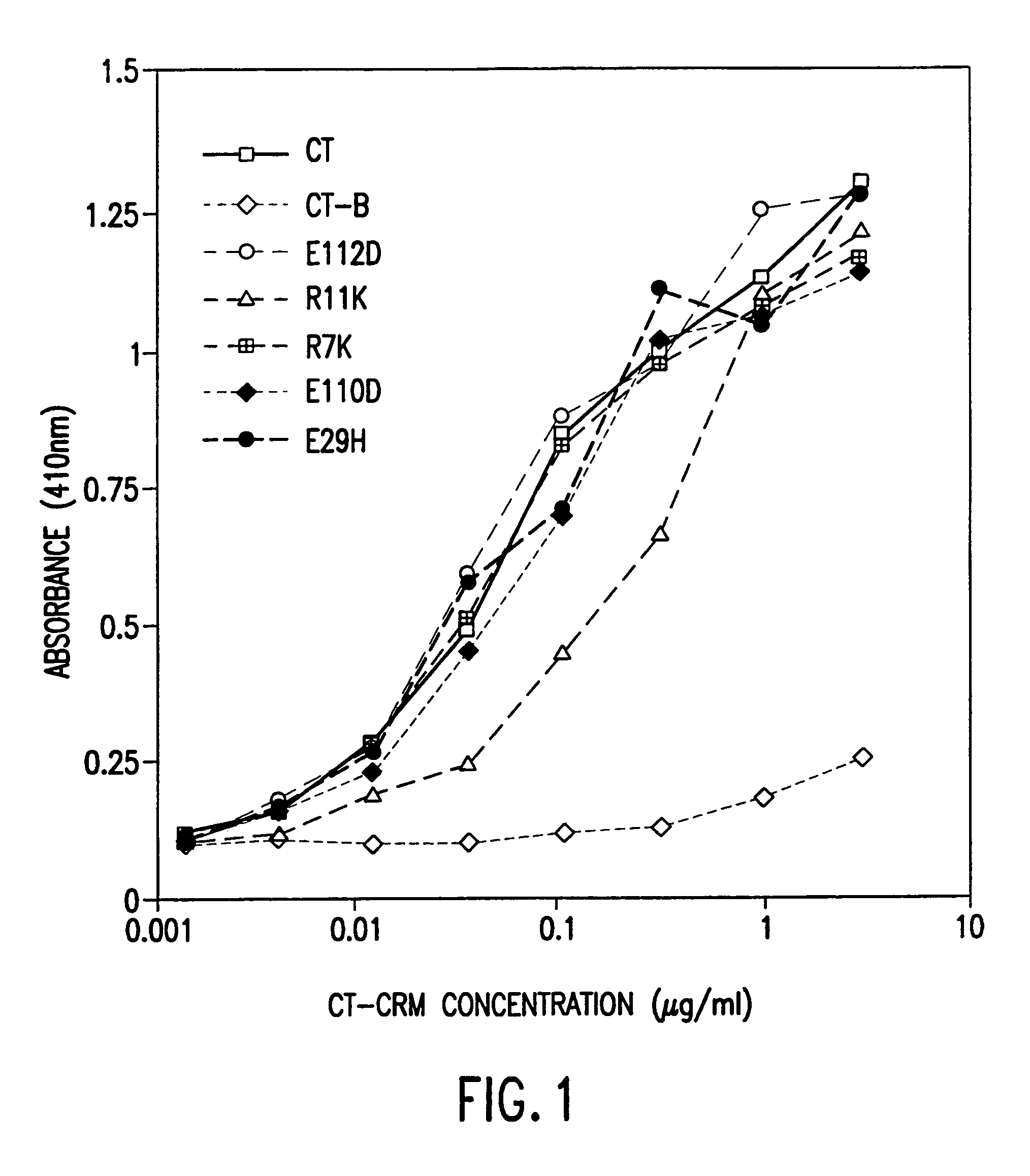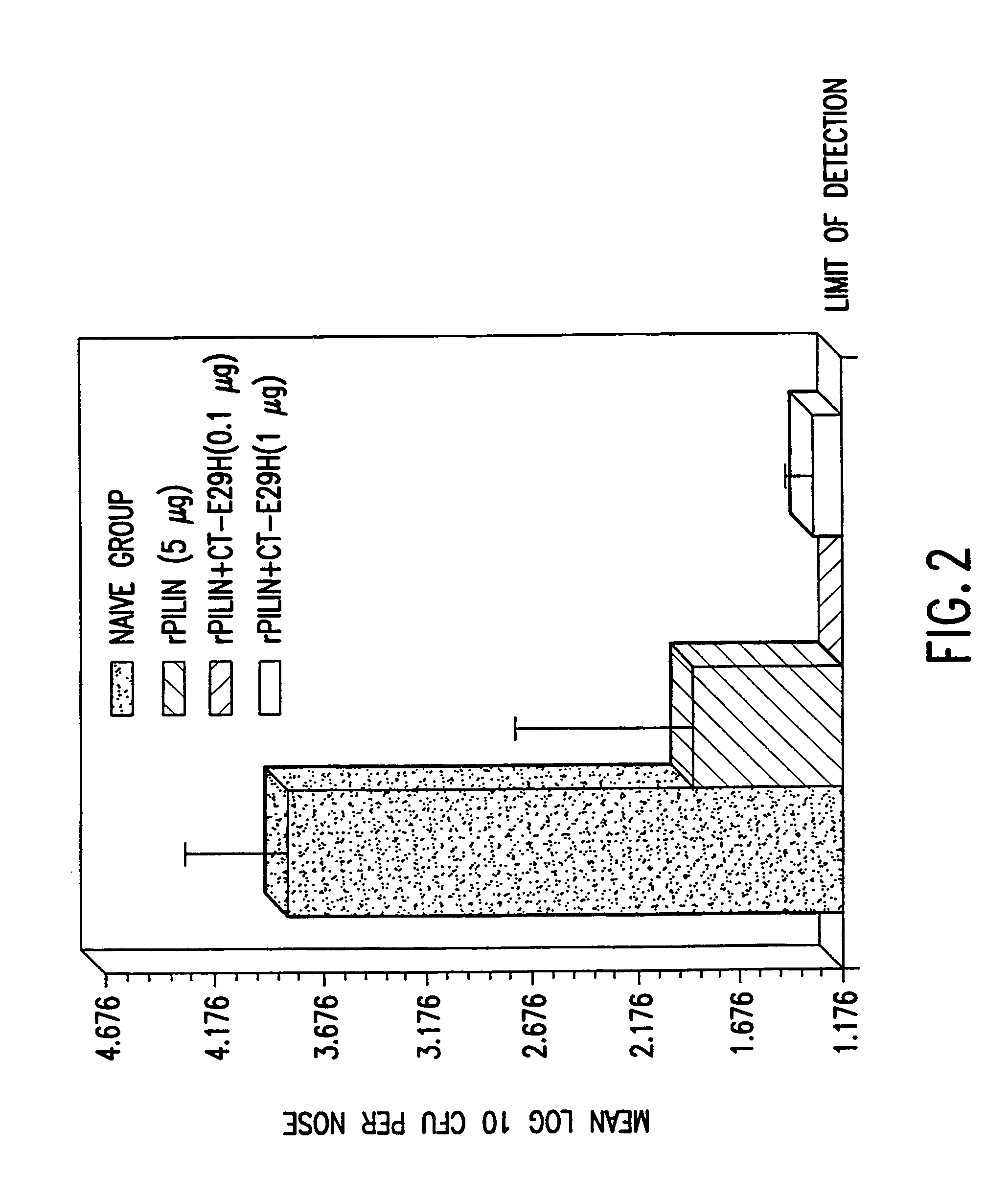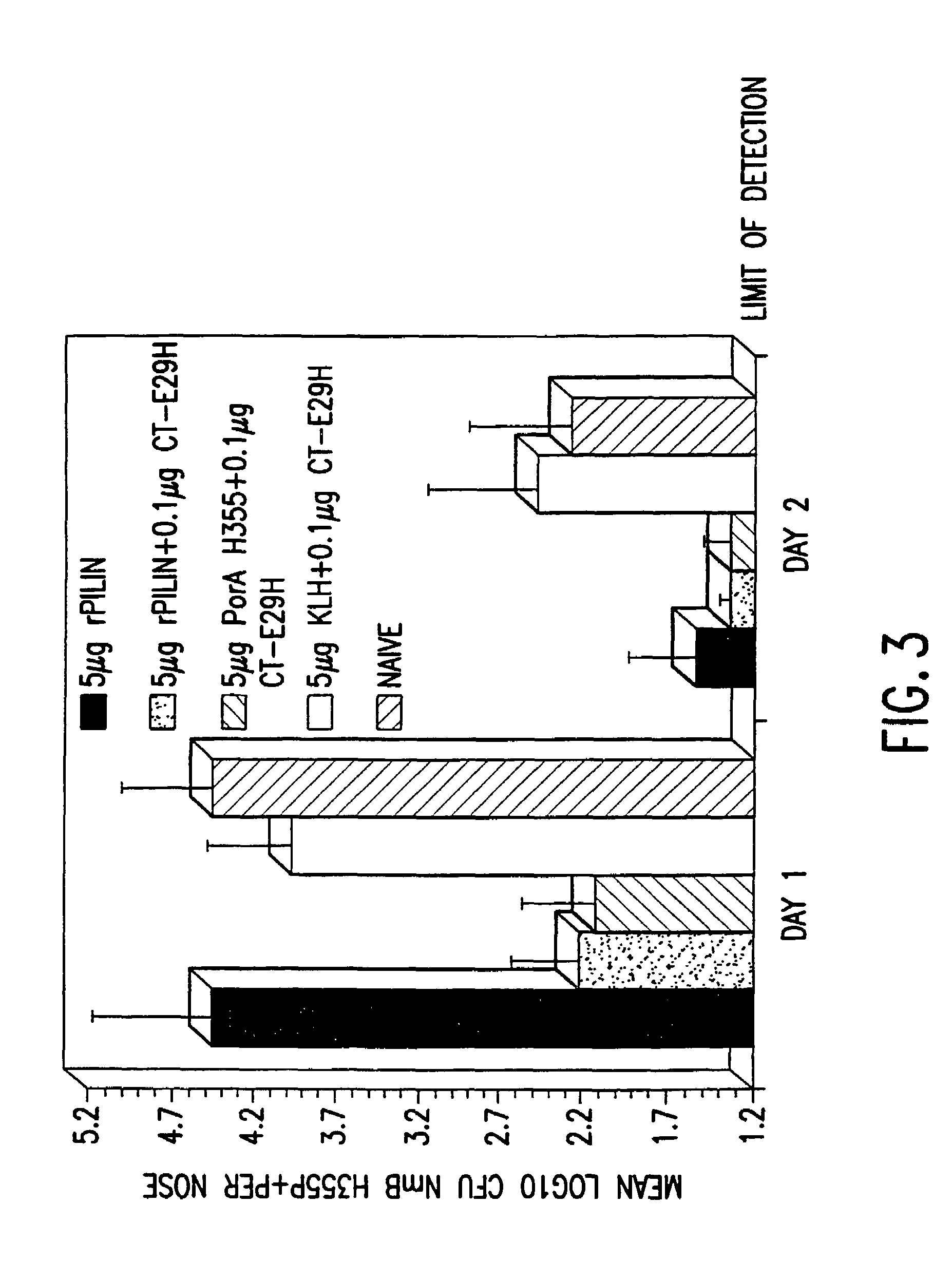Mutant cholera holotoxin as an adjuvant
a technology of cholera holotoxin and mutant cholera, which is applied in the field of immunogenic mutant cholera holotoxin, can solve the problems of inability to purify vaccine antigens, inability to activate all these mechanisms, and inability to achieve the effect of purifying vaccine antigens, etc., and achieves the effect of enhancing immune response and reducing toxicity
- Summary
- Abstract
- Description
- Claims
- Application Information
AI Technical Summary
Benefits of technology
Problems solved by technology
Method used
Image
Examples
example 1
Expression of CT Mutants
Bacterial Strains, Plasmids and Growth Conditions
[0119]E. coli TG1 (Amersham-Pharmacia Biotech, Piscataway, N.J.), and TX1, a nalidixic acid-resistant derivative of TG1, carrying FTc,lacIq from XL1 blue (Stratagene, LaJolla, Calif.; (41)) and CJ236 (FTc, lacIq) (Bio-Rad, Hercules, Calif.) were used as hosts for cloning recombinant plasmids and expression of mutated proteins. Plasmid-containing strains were maintained on LB agar plates with antibiotics as required (ampicillin, 50 μg / ml; kanamycin 25 μg / ml; tetracycline 10 μg / ml). A complete CT operon from V. cholerae 0395 was subcloned into the phagemid vector pSKII−, under the control of the lac promoter, to create the IPTG inducible plasmid designated pMGJ67 (42).
Mutagenesis of ctxA Gene
[0120]The method of Kunkel (43) was used to select for oligonucleotide-derived mutants created in plasmid pMGJ67. The oligonucleotides used to generate the five mutant CT-CRMs are described in Table 1.
[0121]
TABLE 1Sequence of...
example 2
The GM1 Binding Assay for Intact Holotoxin
[0126]The CT-CRMs were examined in a ganglioside GM1-dependent solid phase radioimmunoassay (42) to determine whether intact holotoxin was present after purification. An enzyme-linked immunosorbent assay (ELISA) was used where ELISA plate microwells were coated overnight at 4° C. with ganglioside GM1 (10 μg / ml). Thereafter, the following reagents were added in sequence with an interval of one hour incubation at room temperature: CT-CRMs (titrated from 3 μg / ml to 0.00137 μg / ml), 100 μl of rabbit anti-CT-A sera (1:1,000), and alkaline phosphatase conjugated goat anti-rabbit antibody (1:2,000). To visualize the reaction, 100 μl of p-nitrophenyl phosphate at 1 μg / ml in diethanolamine was added and incubated for 30 minutes. The reaction was stopped by adding 100 μl of 2 N NaOH and immediately read by a Microelisa autoreader. When compared to wild-type CT, the data indicated that the CT-CRMs with amino acid substitutions at positions 7, 29, 110, o...
example 3
Y-1 Adrenal Cell Assay for Residual Toxicity of CT-CRMs
[0127]The mutant CT-CRMs were compared several times with wild-type holotoxin for toxicity in the mouse Y-1 adrenal tumor cell assay. Y-1 adrenal cells (ATCC CCL-79) were seeded in 96-well flat-bottom plates at a concentration of 104 cells per well. Thereafter, three-fold serial dilutions of CT-CRMs were added to the tumor cells and incubated at 37° C. (5% CO2) for 18 hours. The cells were then examined by light microscopy for evidence of toxicity (cell rounding). The endpoint titer was defined as the minimum concentration of toxin required to give greater than 50% cell rounding. The percent of residual toxicity is calculated using the endpoint titer of wild-type CT divided by the titer elicited by CT-CRM multiplied by 100. Table 2 depicts the residual toxicity of several purified mutant holotoxins tested in the Y-1 adrenal cell assay.
[0128]
TABLE 2The toxicity for Y-1 adrenal cellsY-1 Adrenal Cell Assay% ResidualCT-CRMToxicityE1...
PUM
| Property | Measurement | Unit |
|---|---|---|
| Volume | aaaaa | aaaaa |
| Volume | aaaaa | aaaaa |
| Mass | aaaaa | aaaaa |
Abstract
Description
Claims
Application Information
 Login to View More
Login to View More - R&D
- Intellectual Property
- Life Sciences
- Materials
- Tech Scout
- Unparalleled Data Quality
- Higher Quality Content
- 60% Fewer Hallucinations
Browse by: Latest US Patents, China's latest patents, Technical Efficacy Thesaurus, Application Domain, Technology Topic, Popular Technical Reports.
© 2025 PatSnap. All rights reserved.Legal|Privacy policy|Modern Slavery Act Transparency Statement|Sitemap|About US| Contact US: help@patsnap.com



